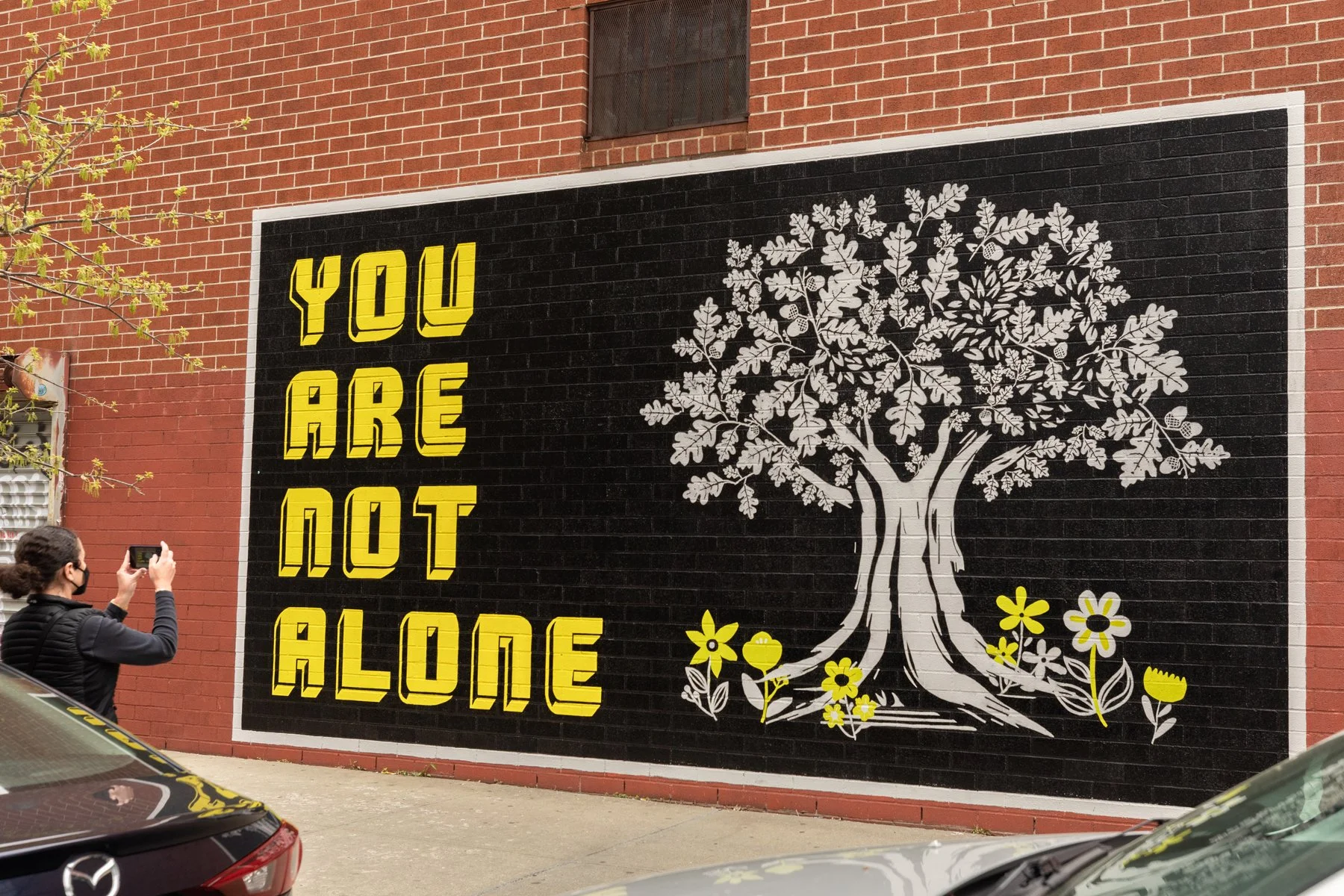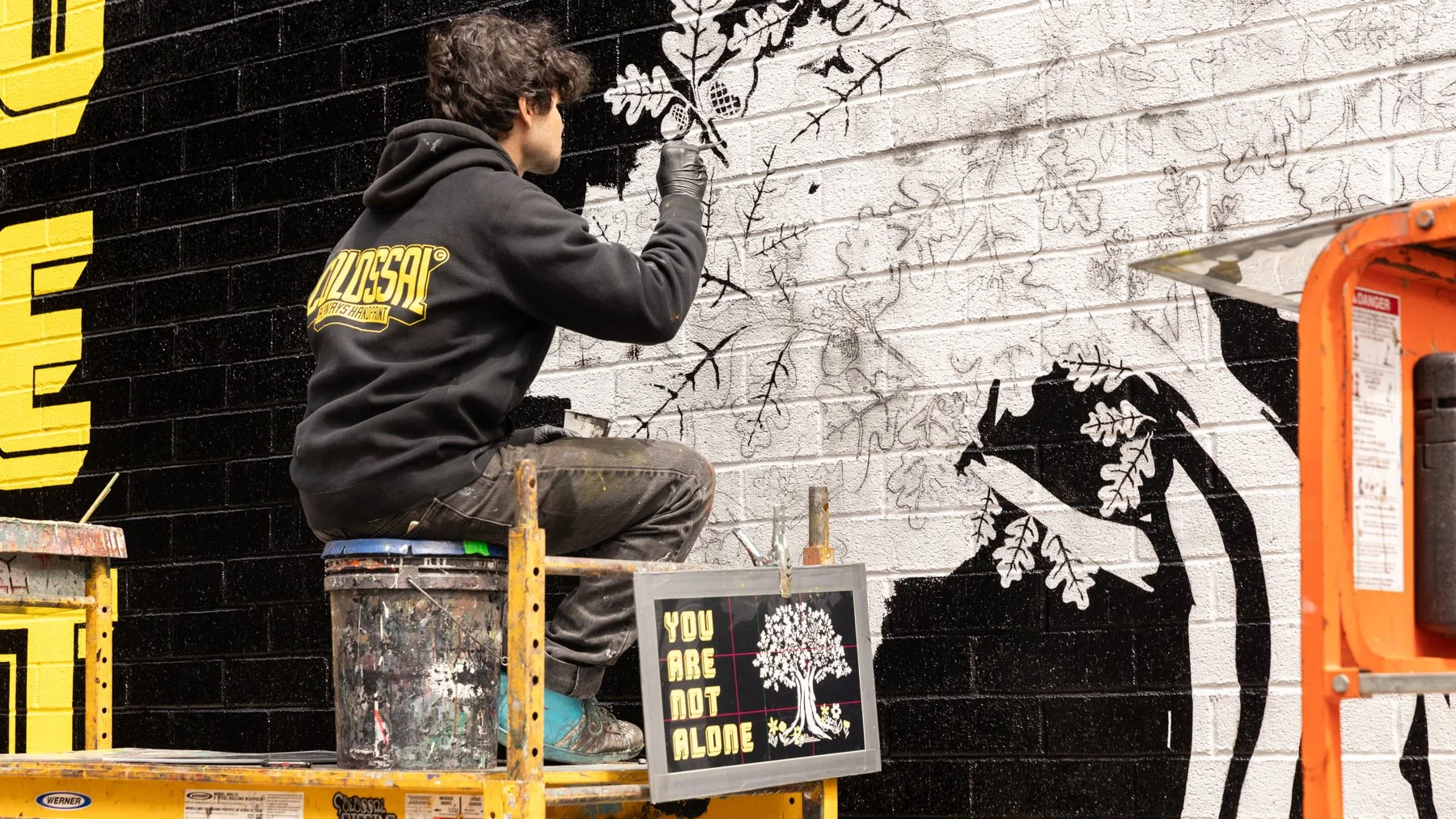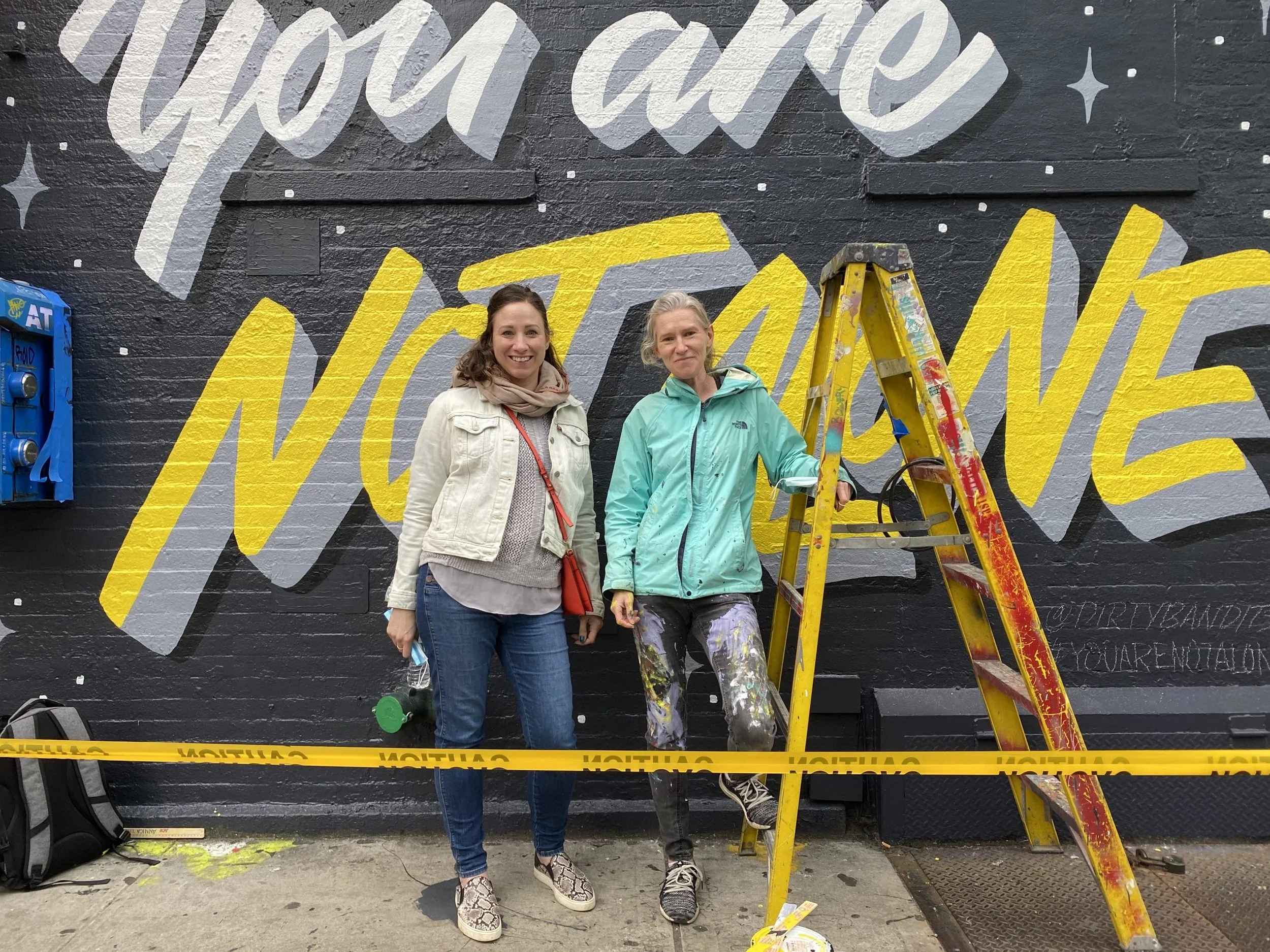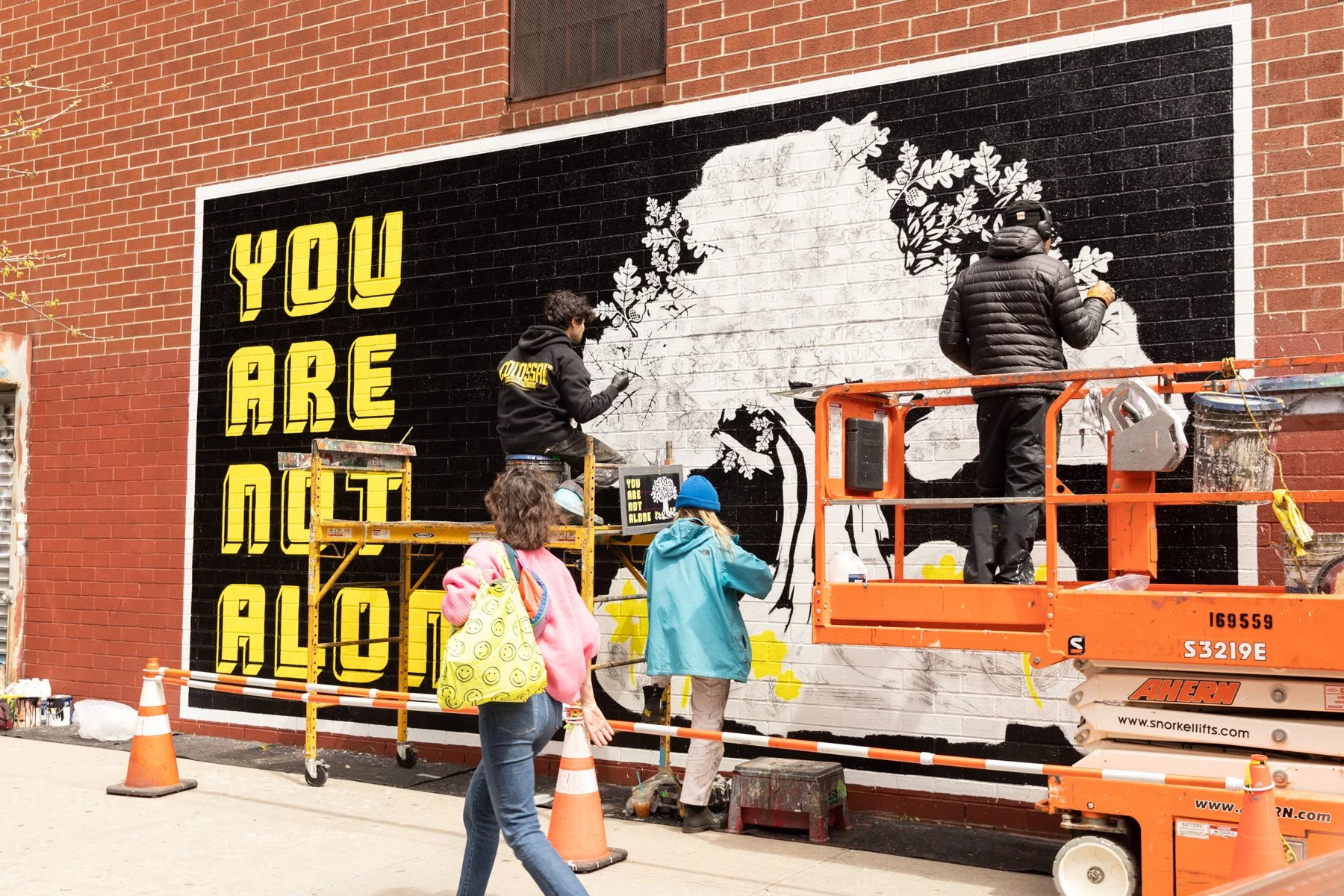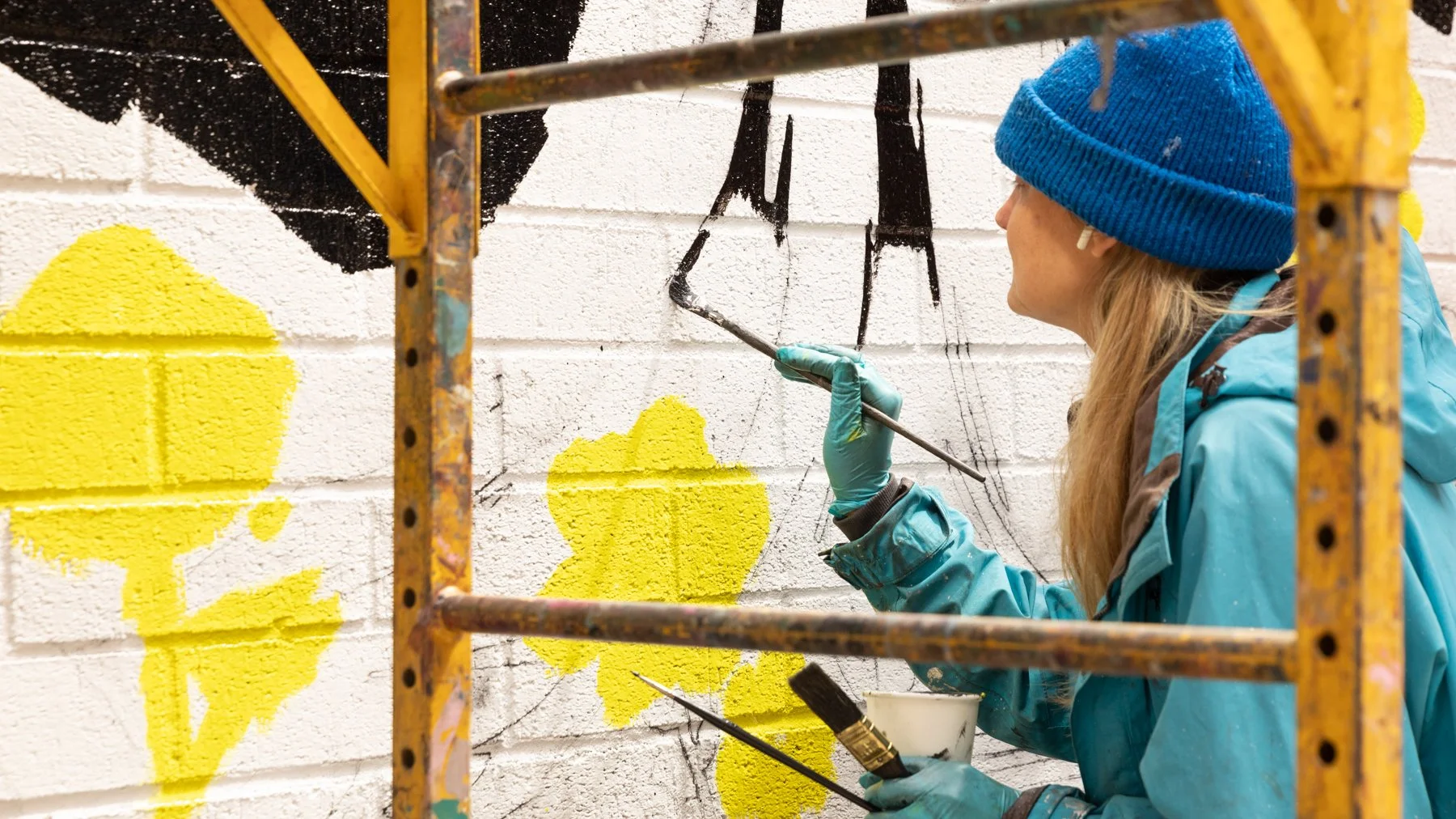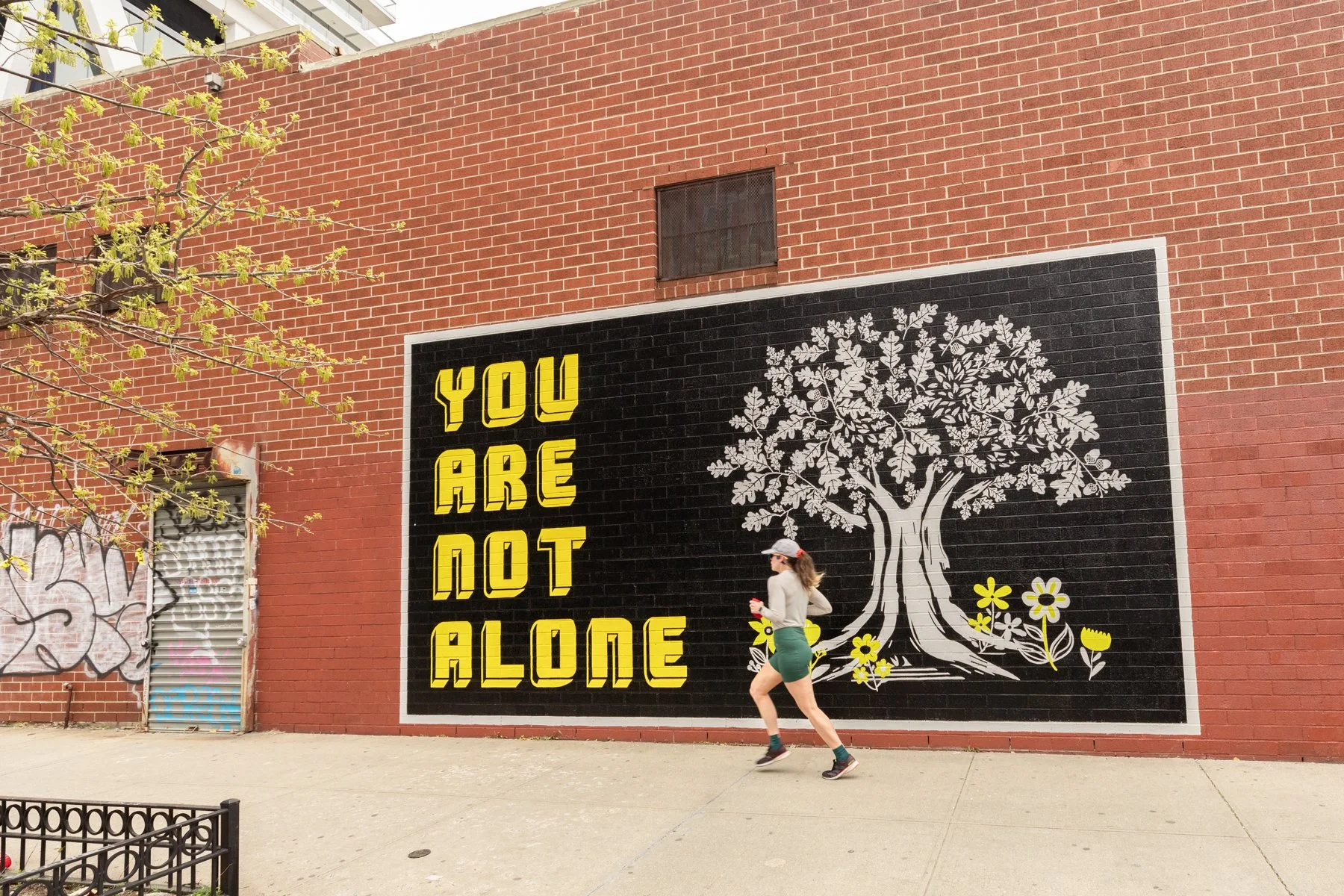Represent: You Are Not Alone
In April 2022, we had the chance to create a mural with perhaps one of the most powerful messages anyone can send or receive. A mural that tells its viewer: You have community, empathy, and support. You are not alone.
We first learned about the You Are Not Alone Murals project through Colossal Studios artist network, when a casual introductory phone call quickly became an earnest discussion of mental health advocacy and awareness. Through continued conversations, we were inspired to participate in the You Are Not Alone Murals project. Public art with a profound impact — right up our alley.
Catalyzed by her memoir describing severe anxiety and panic attacks in college, author Samantha Schutz joined artist Annica Lydenberg to mural for mental health awareness. After founding You Are Not Alone Murals (YANAM), the two friends were met with massive support. Artists and advocates from all over the world have contributed designs and talent; now 35 murals across the United States bear this message of empathy and solidarity.
The Start Today committee tapped Colossal Studios to design a mural that reflected the team’s interpretation of mental health and safety. An oak tree symbolizes strength, steadiness, and endurance — reinforced by the solid typeface. The flowers and acorns suggest new growth. Also, it’s really pretty.
As our painters took to the custom-scouted wall on N 12th and Berry St. in Williamsburg, we got the chance to chat with Sam and Annica about the past, present, and future of You Are Not Alone Murals.
Left to right: Samantha Schutz and Annica Lyndenberg in front of a You Are Not Alone mural. Photo courtesy of You Are Not Alone Murals.
Why did you decide to write your book?
Samantha Schutz: Shortly after heading off to college for my freshman year, I started having panic attacks. Only I didn’t know what I was feeling had a name. My first attacks were terrifying. They were scattered and seemingly without pattern. I didn’t know when they would hit. Over the next few years, I cycled through a variety of meds and therapists. There were stretches of time when I felt great and others where I was consumed by anxiety.
A few years after I graduated from college, my anxiety was well under control, but…I was still fearful a lot of the time and socially reluctant. All those years of panic attacks were a trauma that my body and mind weren’t ready to let go of.
So, I took out my old journals and started reading. I only had to read a few pages to see how bad things had been. The difference between “then” and “now” was stark…and it played a big role in deciding to write my memoir. The journey to writing that book began with the intention of healing myself, but as I typed page after page, I knew it could provide comfort to others.
Was it a challenge to share something so personal?
SS: The people closest to me knew about my journey with anxiety and I was somewhat open with other people. Writing a book was something else entirely. Would I be judged? Would people at work think I was less competent? What if the book got bad reviews? But I pushed those fears aside and kept writing.
After publication, I started getting emails from readers that said, “Your book made me feel less alone.” And this didn’t just happen over email. When I shared my journey in person, people would tell me about their own mental health challenges or what their loved ones were going through. It was as if their emotions were sitting just below the surface of their skin, waiting for a reason to break through.
How did you feel reading the book?
Annica Lydenberg: Ooof — it was big. The book takes place during the years that I knew Sam (I even make a brief appearance) but until I read her book I didn’t know how much I had missed, how much I hadn’t seen.
It was a huge wake up call.It gave me an understanding of the way her anxiety had physically manifested that I had never grasped before. I was awed by how vulnerable she was, and that she shared it all so publicly was impressive to me. The book also gave me the opportunity to reflect on moments when I could have had more empathy and I believe it helped me to be a better friend moving forward.
Why murals?
AL: Murals, and public art in general, are so special to me because by nature, no one can own them, they are temporary. I also really like that the works themselves are vulnerable. When you take the time to paint something outside, you have to trust the public to let it ride. Murals also command your attention in a way you may not be prepared for. There is an element of serendipity to finding art on the street, and when it’s art that you believe speaks to you, it’s even more meaningful.
Have you heard from anyone about the impact seeing one of these murals had for them?
AL: Just as Sam experiences with her book, the murals encourage people to open up. I love when a person re-shares a YANAM with a caption about how they needed to see it that day or in that moment. When I see that, I feel like this is really working.
SS: One follower put it perfectly: “After reading ‘You Are Not Alone’ so many times, in so many creative ways, I think it finally sinks in.” Others talk about how seeing the work makes them feel inspired, uplifted, reassured, loved, and supported. An early supporter of the project said, “In a city of millions, it’s strangely easy to feel forgotten, lost and alone, and for those of us struggling with mental health (in my case anxiety), these larger-than-life murals offer a source of comfort and a constant reminder that there are people who care around us.”
“ There is an element of serendipity to finding art on the street, and when it’s art that you believe speaks to you, it’s even more meaningful.”
What has surprised you most about this project?
AL: The response has been utterly humbling. The willingness of other people to jump on board, to help, to paint, and to collaborate has been so surprising. My father always says, “Don’t just consider the worst scenario, be ready for the best.” This feels like a best-case scenario which, of course, I didn’t actually anticipate.
SS: Right now, we are deep in the weeds ahead of the May launch and mostly I’m surprised at our elasticity. Annica and I are stretched to the max. Both with full time jobs. Both single moms with toddlers. We’re making it all happen. We’re managing it because we feel so passionately about this project…and about supporting each other.
What are your goals for YANAM?
AL: For me, the biggest goal above all else is that the message is reaching people who need to hear it. We all have vulnerabilities and fears so promoting a safe space for people to share is highly important to me. I hope the murals and artwork also encourage empathy and support.
SS: To encourage people to share, connect, and be seen. One facet of the project that I am particularly proud of is that YANAM shares all submissions — everyone will be seen here. Essentially, everyone submitting work is saying, “I get what you’re going through.” or “I am an ally.” My hope is that the person who feels comforted by receiving that message will also pay it forward by being vulnerable and sharing the message with someone else who needs to hear it.
If you or someone you know is struggling with mental illness, please seek help. If you are having suicidal thoughts, please call the National Suicide Prevention Lifeline at 1-800-273-8255. Help is available 24 hours a day, seven days a week.
If you would like to contribute an artwork to You Are Not Alone Murals, tag them on Instagram.

